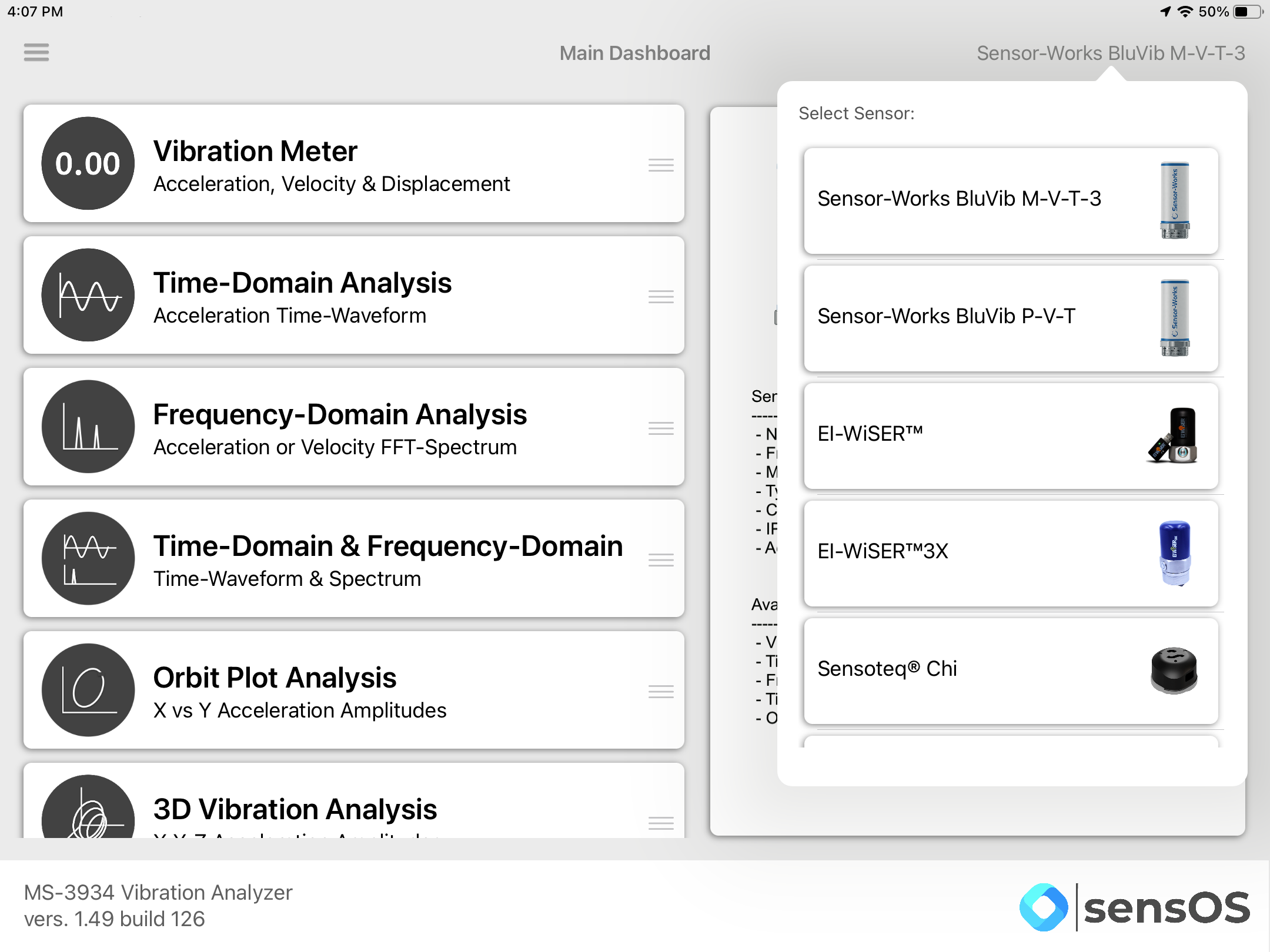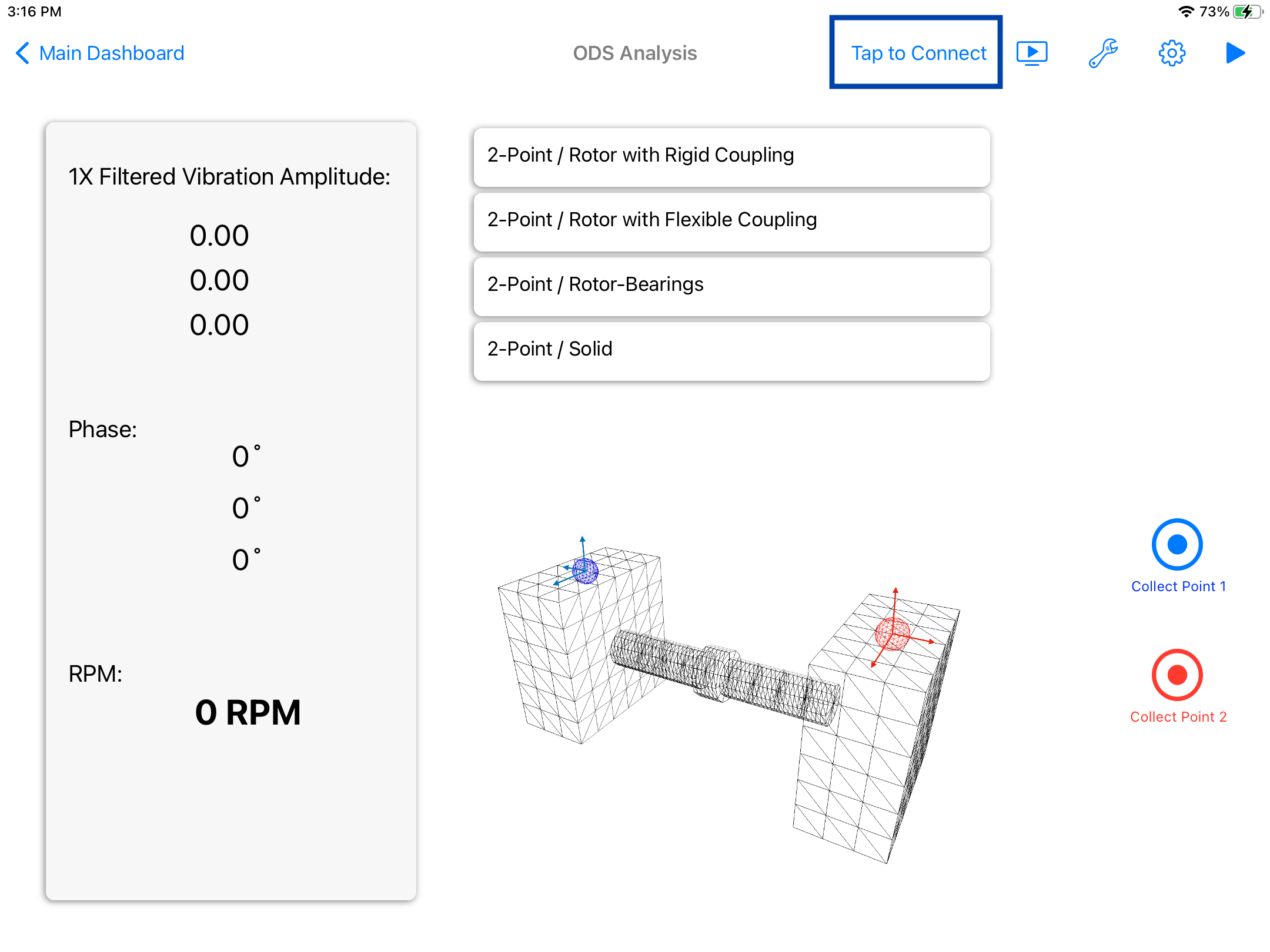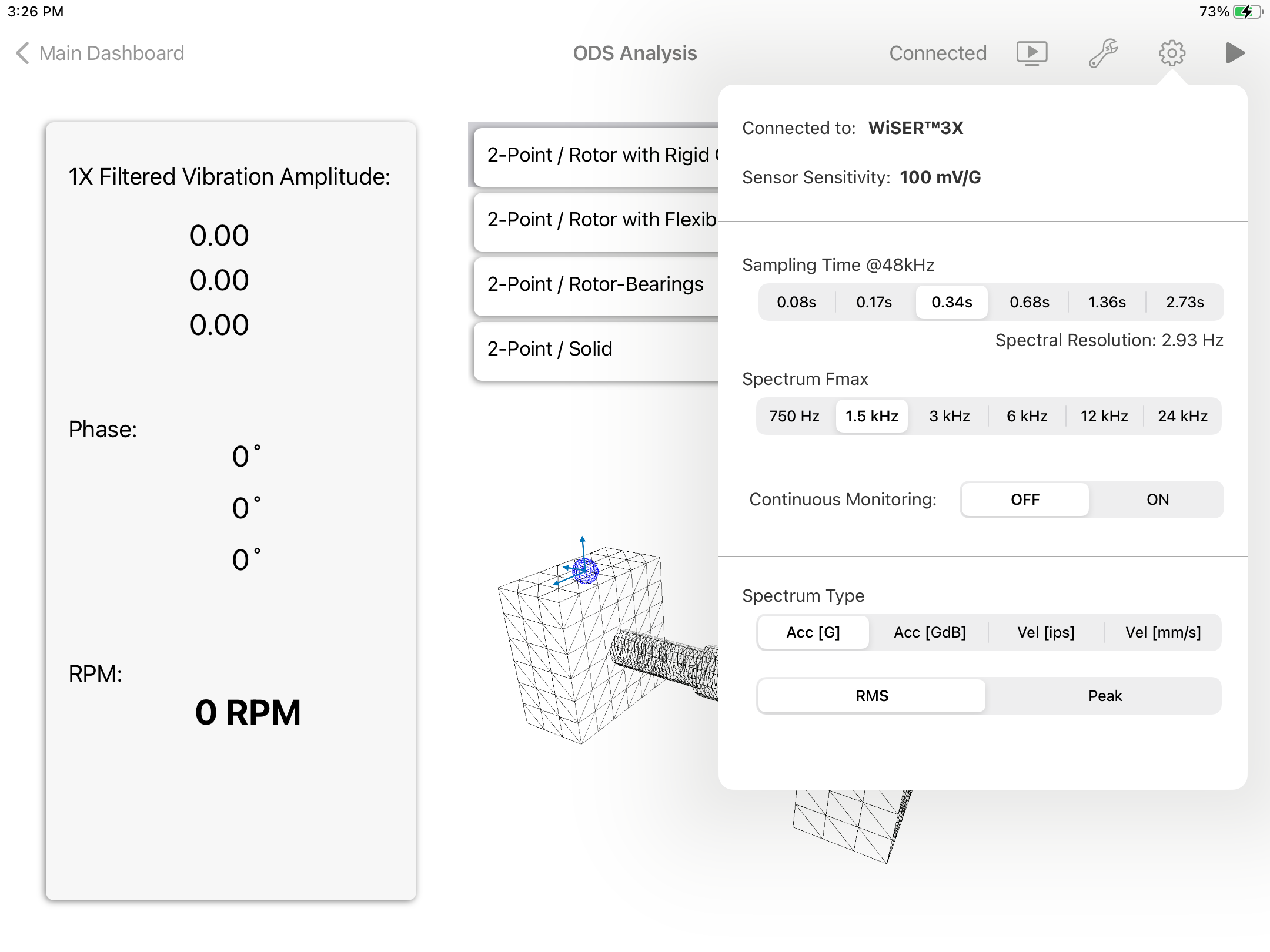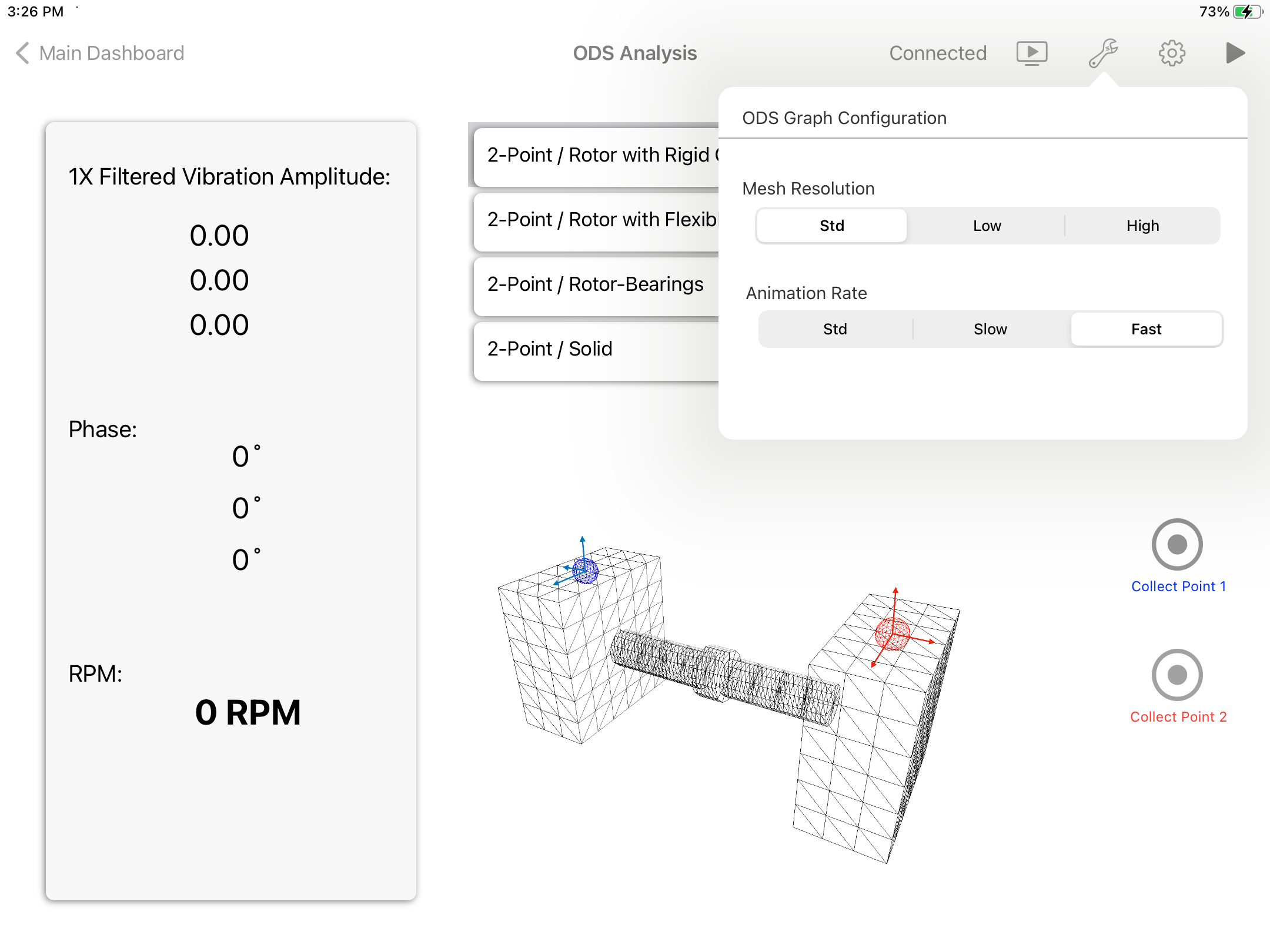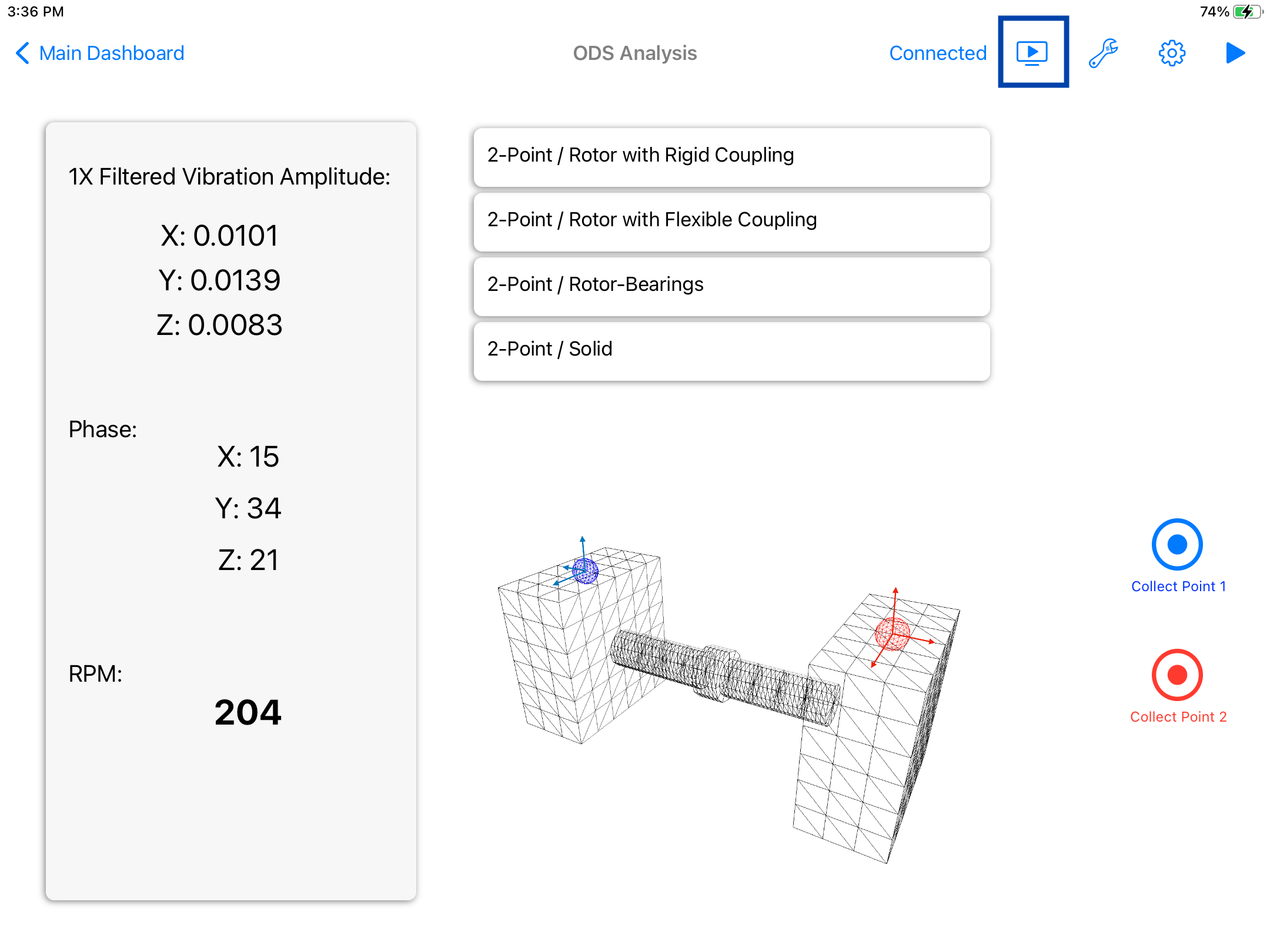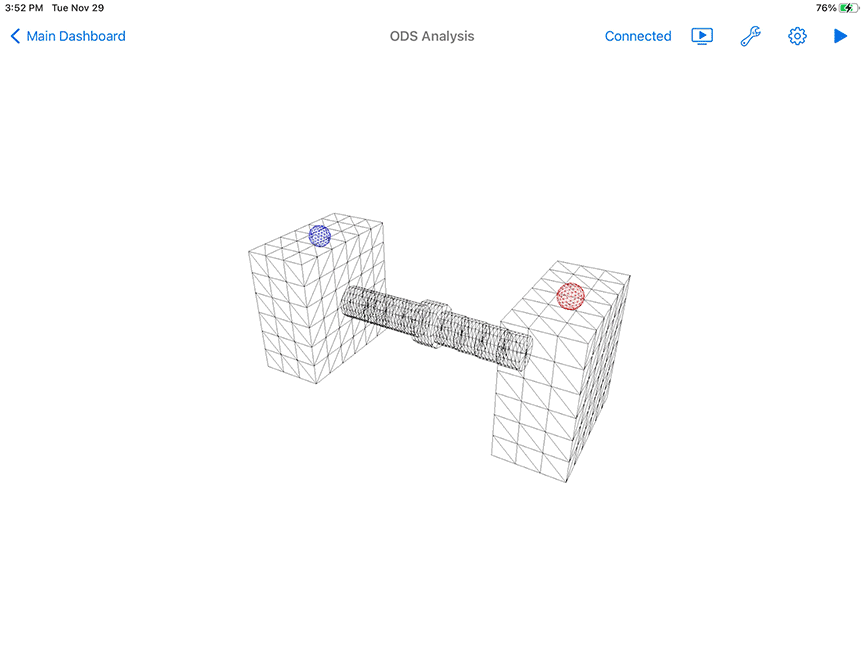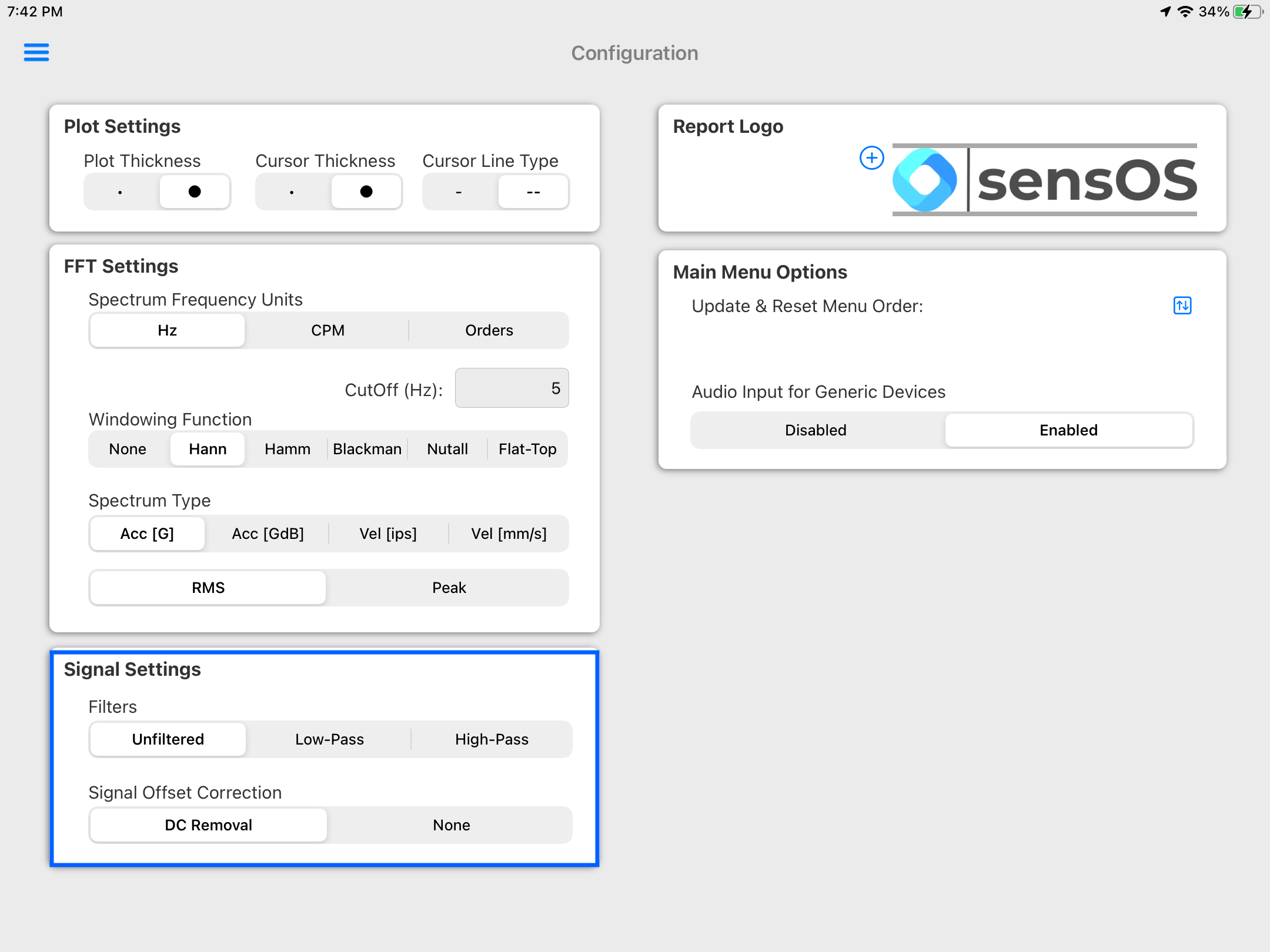Documentation
3934 ODS Analysis
MS-3934: Vibration Analysis Studio iPadOS® version
- Version: 1.49 (b.126)
- Author: D. Bukowitz
- Created: 22 Apr, 2022
- Update: 21 Nov, 2022
If you have any questions that are beyond the scope of this document, Please feel free to email via info@sens-os.com
Description
The Operating Deflection Shape (ODS) analysis is a method of determining the vibration patterns of machinery or structures in operational conditions. This module will use the a 4-Channel sensor (EI-WiSER™3X Wireless sensor) to compare the triaxial motion of two locations, using the tach-signal as a reference.
Compatibility
This module is compatible with the following sensors:
- EI-WiSER™3X (3D)
Main Menu
- Tap on the Sensor name button to open the list of available sensors, and select the sensor type from the list
- Scroll the list of functionalities and select ODS Analysis
Note: The user can change the order of the functionalities in the list by dragging it from the right button on each cell
ODS Analysis
- After turning on the sensor, click on the "Tap to Connect" on the top bar menu, then press "Join" in the dialog box that will appear.
- Select the configuration that better matches the machine, from the list
- The settings pop-up will allow the user to change the sampling rate and the number of samples. Other options, such as windowing, filtering and cut-off value can be modified in the general Configuration view. See Configuration for more details.
- The ODS Graph Configuration pop-up will allow the user to change Mesh resolution and the animation speed.
- After placing the sensor in position 1 and the tachometer as a reference, press the Start ▶︎ button to collect the data and after data is collected press the "Collect Point 1" button. Values of the amplitude, phase and RPM will appear in the gray box. Move the sensor to the position 2 leaving the tachometer in the same position, press the Start ▶︎ button and after data is collected press the "Collect Point 2" button. After both points are measured press the ODS Animation button in the top bar (marked with a blue box below) to start the animation.
- The ODS animation will show the motion of the measured points and produce a simulation of the rest of the mesh, as shown below. To return to the previous screen press the "ODS Animation" button again. Pressing the "Main Dashboard" will take you out of the app and collected data will be lost.
- From the Main menu, click the top left menu button to open the left drawer with more options. Select 'Configuration' from the left menu
- The Signal Settings will affect the raw data directly. The DC-Removal is ON by default by can be turned OFF here. Also a general Low-Pass or High_pass filter can be applied to the signal.
- The FFT Settings will be set as defaults for all readings. Here the user can change the spectrum frequency units to Hz, CPM or Orders. A Cut-Off value can be added to remove low frequency values. Also windowing can be selected for the spectrum, the available options are: None, Hanning, Hamming, Blackman, Nutall and Flat-Top. The spectrum type and RMS/Pk values can be set as defaults here, but can also be changed in the settings pop-up of the spectrum.
- Optimized Optimized for iPadOS 16
- Added Added 2-Point/Rotor with Flexible Coupling configuration
Configuration
Note: This selection will affect all reading's raw data for all modules
Changelog
See what's new added, changed, fixed, improved or updated in the latest versions.
Version 1.49 b.126 (21 Nov, 2022)
Version 1.38 b.111 (20 May, 2022)
Version 1.35 b.108 (22 Apr, 2022)
Initial Release
